How to grow sunflowers: top tips on planting and caring for these summer beauties
You won't believe how easy it is to learn how to grow sunflowers – one packet of seeds is all it takes to fill the garden with blooms

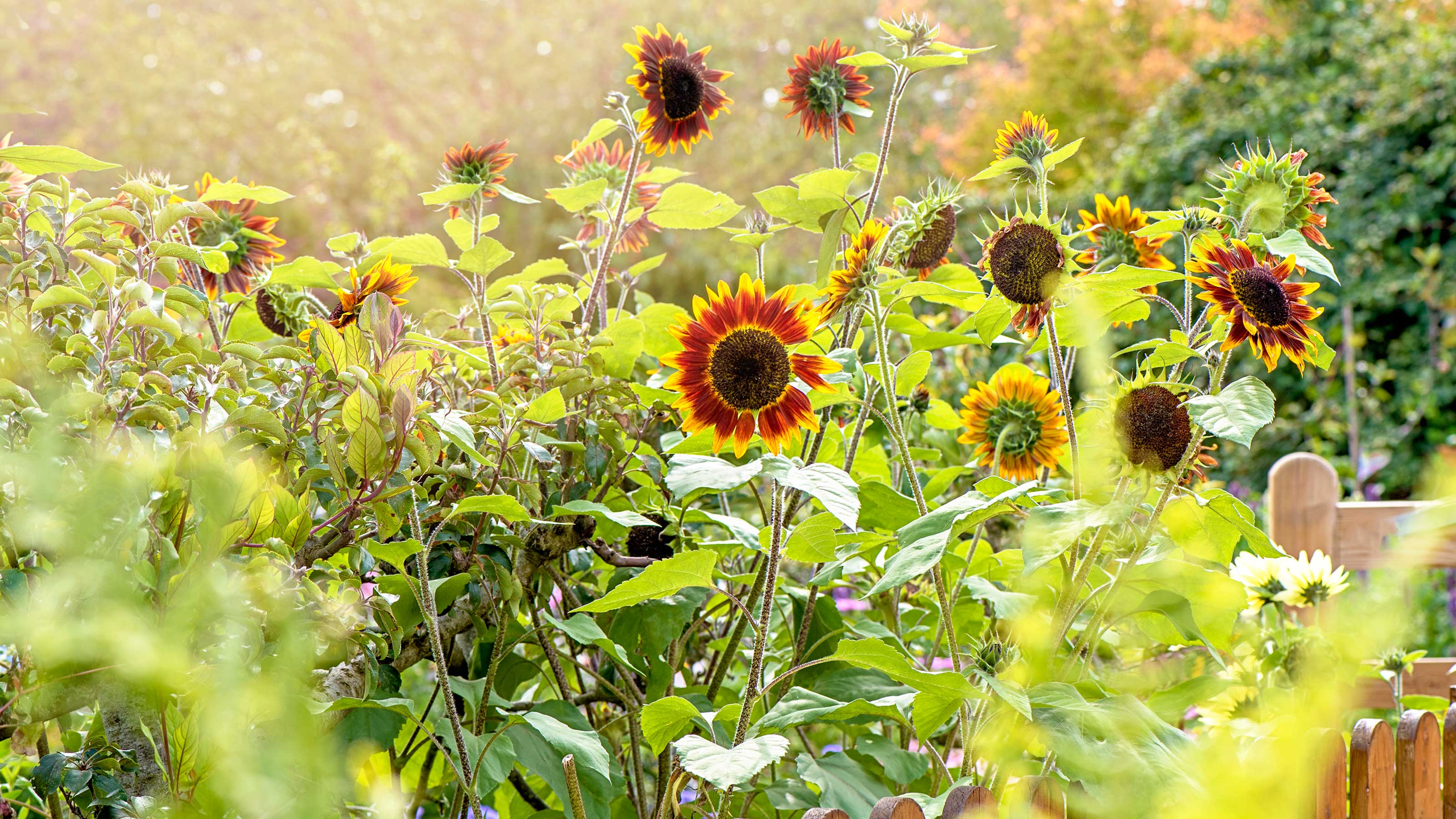
Want to know how to grow sunflowers? With our advice, you'll soon realize just how simple it is to grow these bright and cheery blooms.
Sunflowers, otherwise known as helianthus, are great fun to grow for all ages as they shoot up so fast. And there's a vast range to choose from, from giant ones that reach heights of 10ft tall to dwarf varieties of only 1.5ft. You can be sure that there's a sunflower to suit your plot, no matter how much space you have going spare. There's also a great range of colors in addition to the usual yellow variety. There are dark shades of ruby and claret red, and they can come in orange, gold and brown tones too – perfect if you're looking for more unusual flowerbed ideas.
Apart from staking them when they start to grow tall and watering them well, there's not much else to do in terms of maintenance. This makes them a brilliant option for beginners. What's more, flowerheads can be left on the stalk once they start to fade to create an autumnal outdoor display that peckish birds will love. So, if you haven't considered adding sunflowers to your garden before, why not give them a go next growing season?
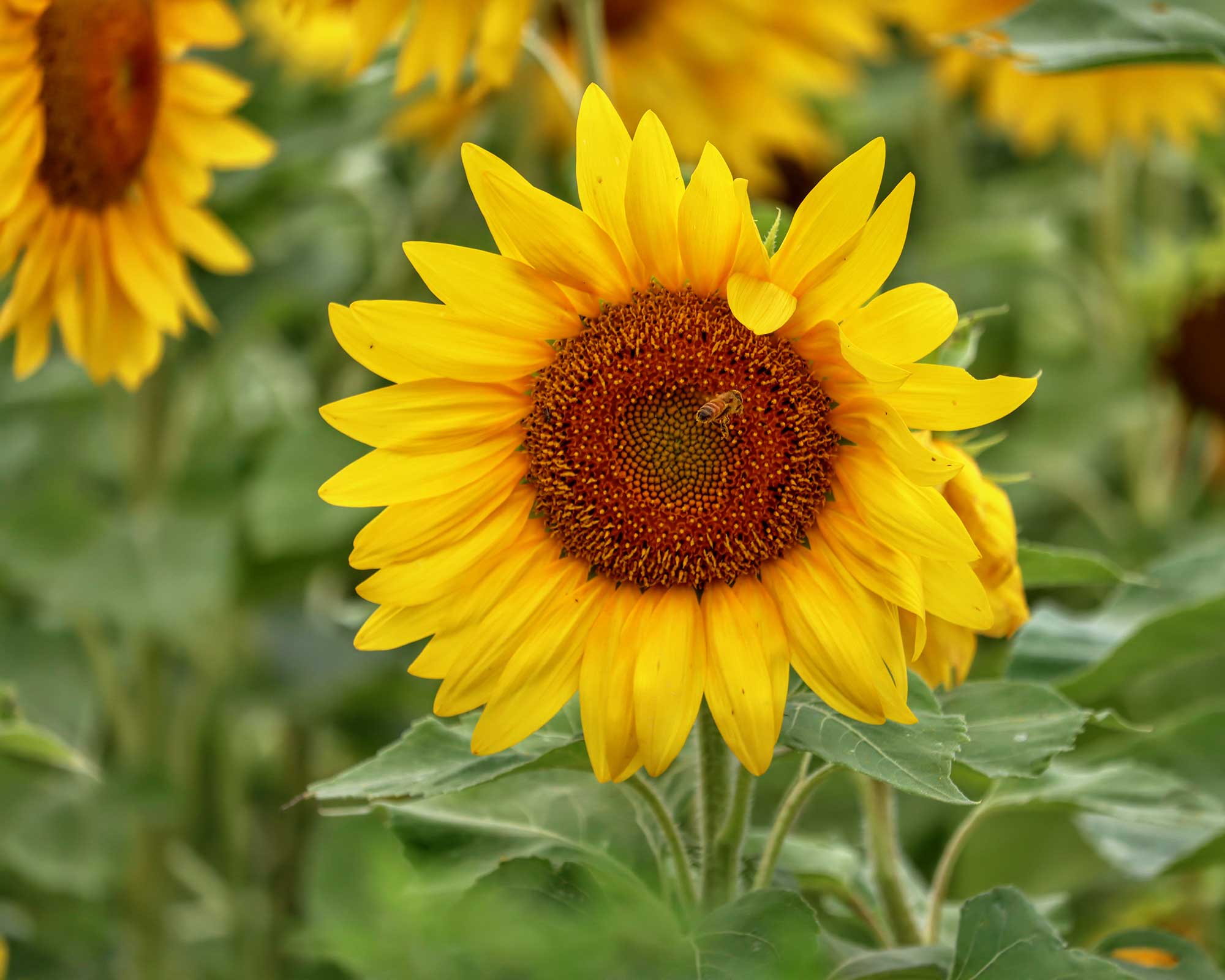
How to grow sunflowers: step-by-step advice
It's easy to learn how to grow sunflowers from seeds, so this is a great option to go for. They're inexpensive and readily available from a wide range of suppliers.
Here's how to do it:
- At the end of March/early April sow two seeds per 3.5in (9cm) pot filled with multipurpose compost, pushing them in at a depth of around half an inch (1.5cm). Water and cover each pot with a clear plastic bag.
- Stand pots in the greenhouse or choose a sunny windowsill indoors. They'll take about 7–10 days to germinate. If both seeds in your pot germinate, remove the weaker one so that the other can continue to grow strongly, advises the team at Easy Gardens. Keep them well-watered after they have germinated.
- Young sunflowers can be planted out in late April. Harden them off for around two weeks before you do this, by putting the pots outside during the day, then returning them to the greenhouse or indoors overnight. Alternatively, you can direct sow seeds into the ground at this time.
- Whether you're direct sowing or planting sunflowers that you've started off in pots, pick a spot that has well-drained soil and a sunny aspect. Prepare the soil by removing weeds (our guide on how to get rid of weeds has plenty of tips) and adding plenty of organic matter. Then, plant the sunflowers to the same depth as they were in the pot. Large varieties should be planted 15in (38cm) apart, and dwarf ones around 8.5–10in (22–25cm) apart.
- Stake plants as necessary with canes to stop them flopping over and becoming wind damaged.
You can find more advice on how to grow flowers from seeds in our dedicated feature.
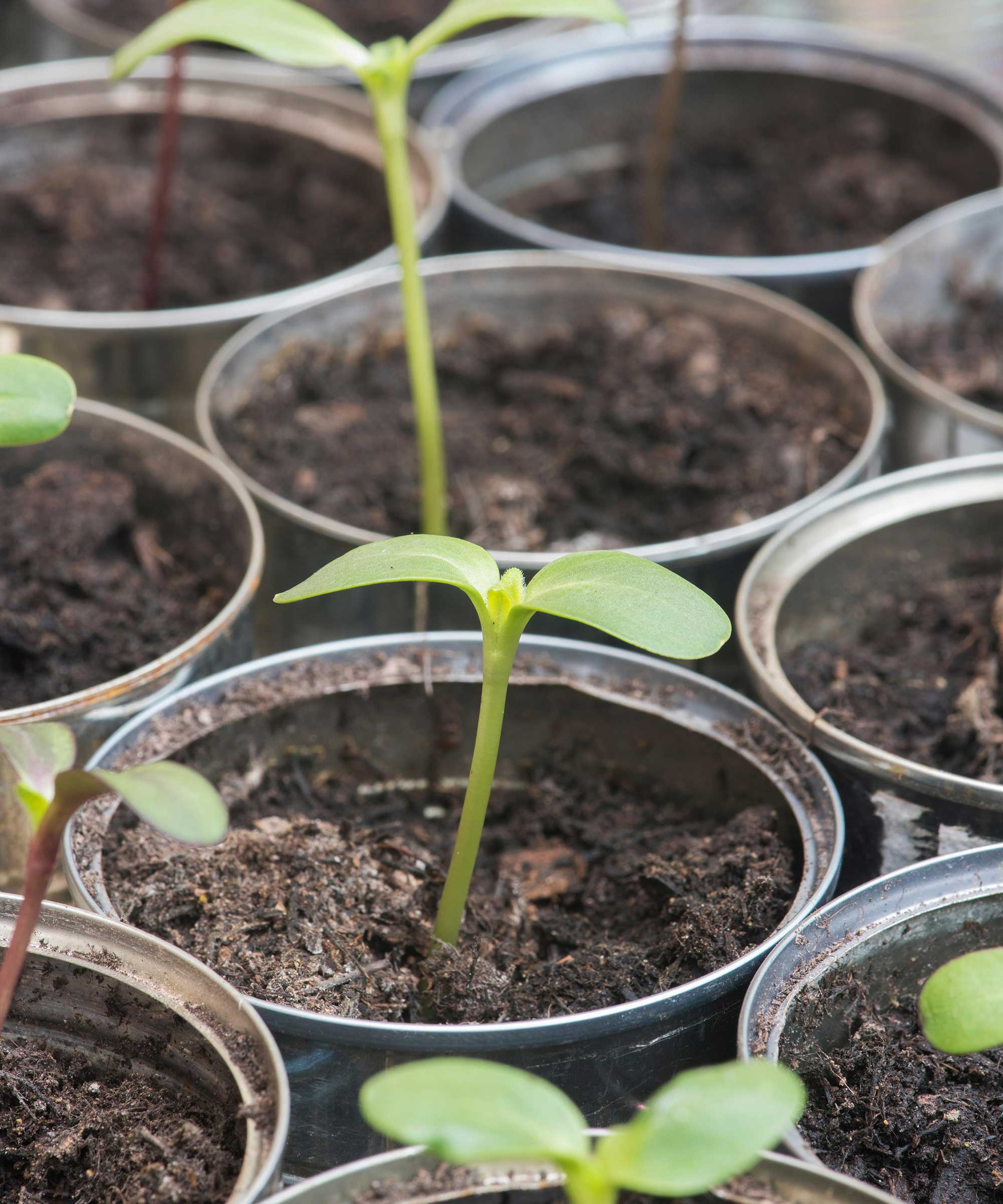
When should you plant sunflowers?
As mentioned above, you can sow sunflower seeds from early spring (usually the end of March) and plant them out once the weather has warmed and there's no danger of overnight frosts. If you don't have a greenhouse or the space to grow them indoors, you can sow them directly into the ground from the middle of April onwards – push the seeds firmly into the ground and water them in well. Whichever method you decide on, you should be rewarded with lovely flowers from the end of summer (typically August) onwards.
Sowing sunflower seeds is a fun thing to do with kids, so why not get them involved too? You'll find more garden activities for kids in our guide.
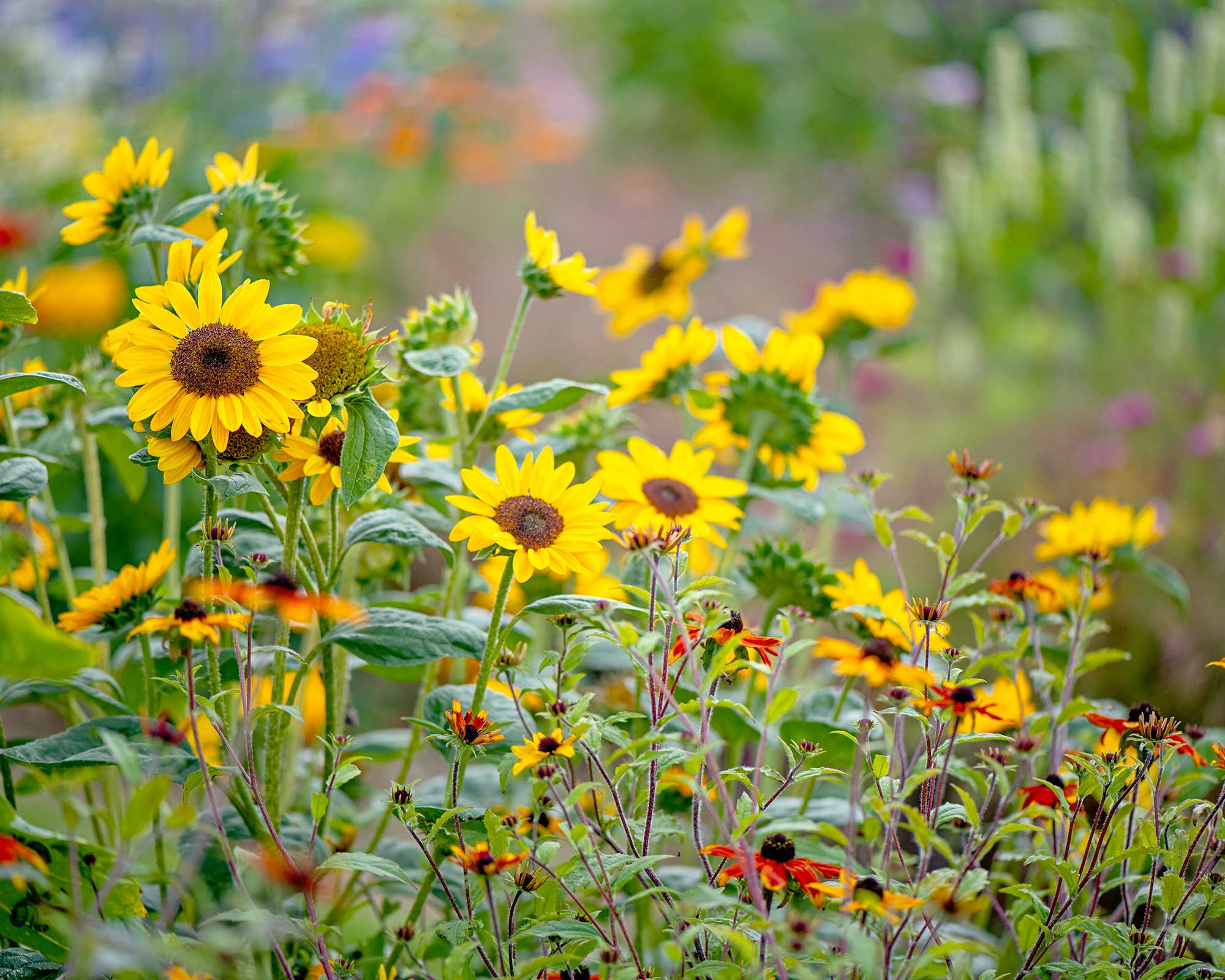
Where should you plant sunflowers?
Sunflowers grow best if you put them in a spot where they will get full sun. They also prefer a sheltered position, so an ideal place to put them is against your garden wall or shed. Other than that, they're pretty easy going and will grow in any kind of soil, as long as it's not waterlogged. In fact, they often self-seed and will pop up where you least expect it. But, the more fertile the soil, the more they will thrive.
If you want your plants to grow tall they will be better off in the ground, but sunflowers also do well in garden planters.
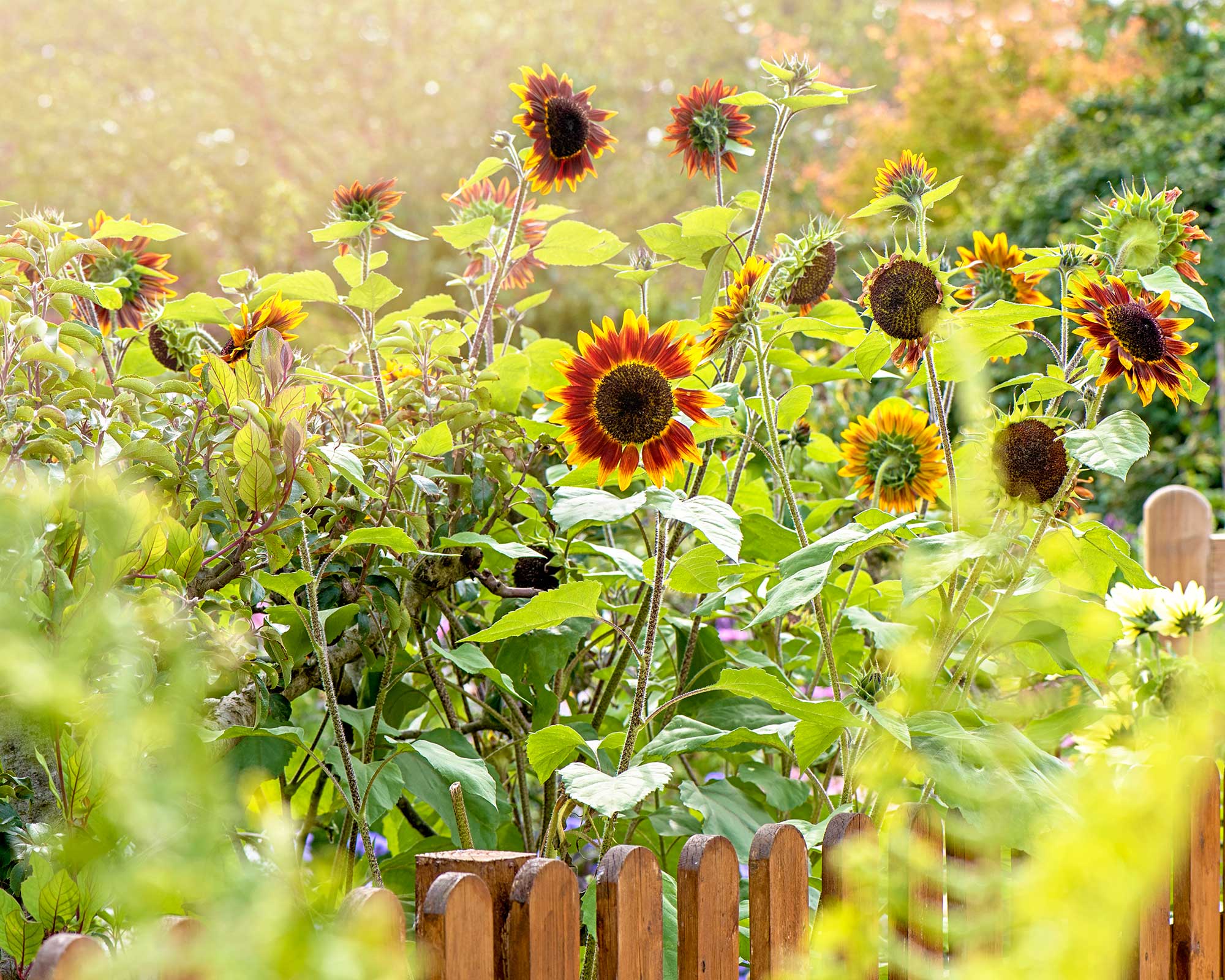
How to care for sunflowers
'Tall sunflowers need support, and if you want to grow a giant they'll benefit from feeding, but otherwise these are low-maintenance annuals with big rewards,’ says Tamsin Hope Thomson for Amateur Gardening. Supporting them is simple – just tie them to sturdy bamboo canes or hazel beanpoles with twine. Choosing a sheltered spot for them should help protect them too as they won't be as much at risk from high winds.
You will also need to keep your sunflower plants watered, especially during dry spells – try not to let them dry out. For best results, you can also nourish them weekly with a tomato feed when you see the flower buds appear.
- Need some advice on watering plants while away on vacation? Our guide is full of useful tips.
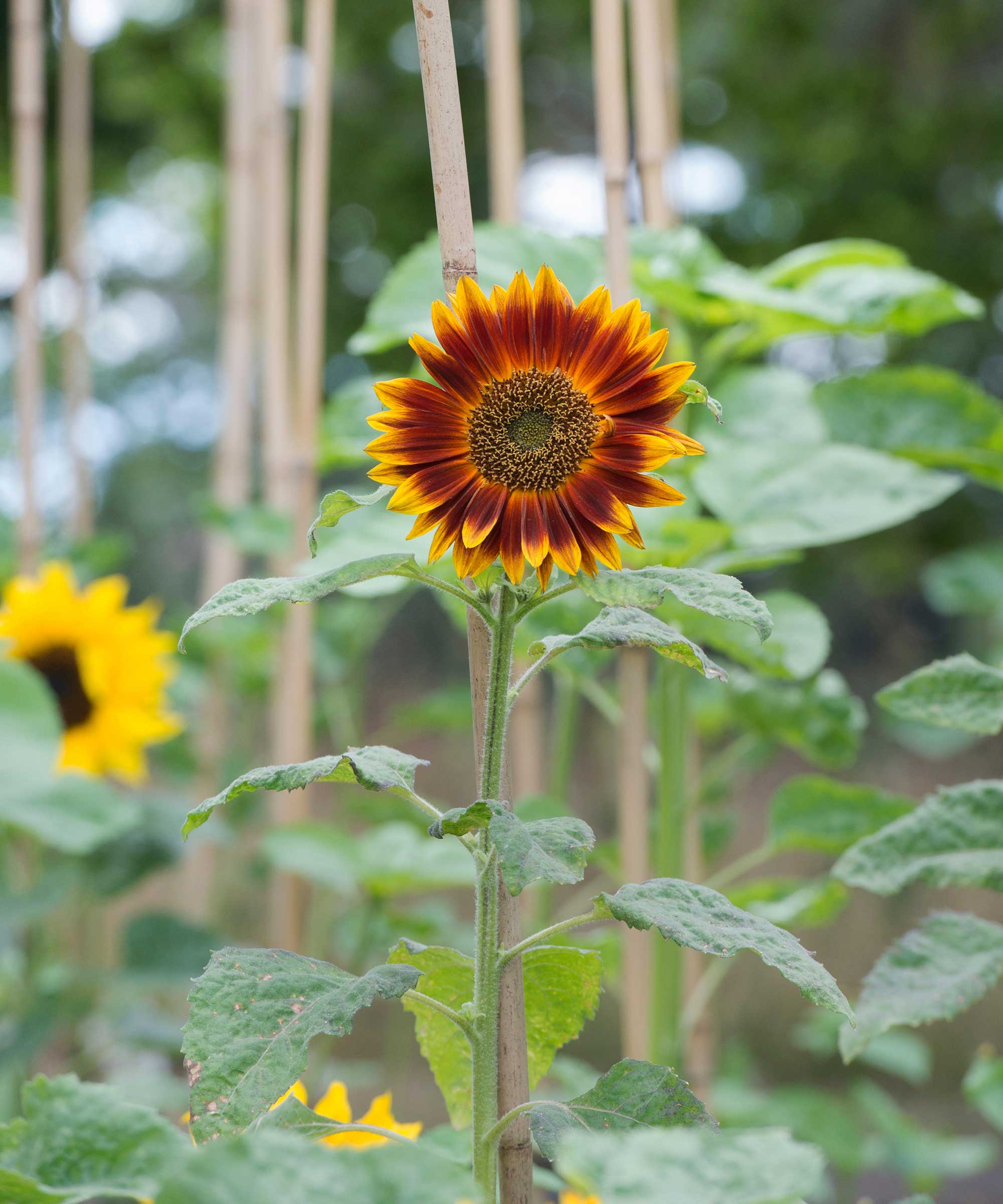
Common problems with sunflowers
Sunflowers are generally trouble-free but young seedlings are susceptible to hungry slugs and snails. You can protect them with a cover, such as a cloche made from the top part of a cut-in-half plastic bottle, as suggests the team at Easy Gardens. Alternatively, try wildlife-friendly slug pellets or surround the plants with copper tape to keep the pests at bay. There are lots more tips on how to get rid of slugs in the garden in our expert guide.
Sunflowers can also be affected by mildew if conditions are damp and humid. Reduce the risk by making sure your sunflowers aren't too cramped in their growing conditions to increase air flow, and water the soil beneath them rather than the leaves. Remove any infected leaves and stems and discard.
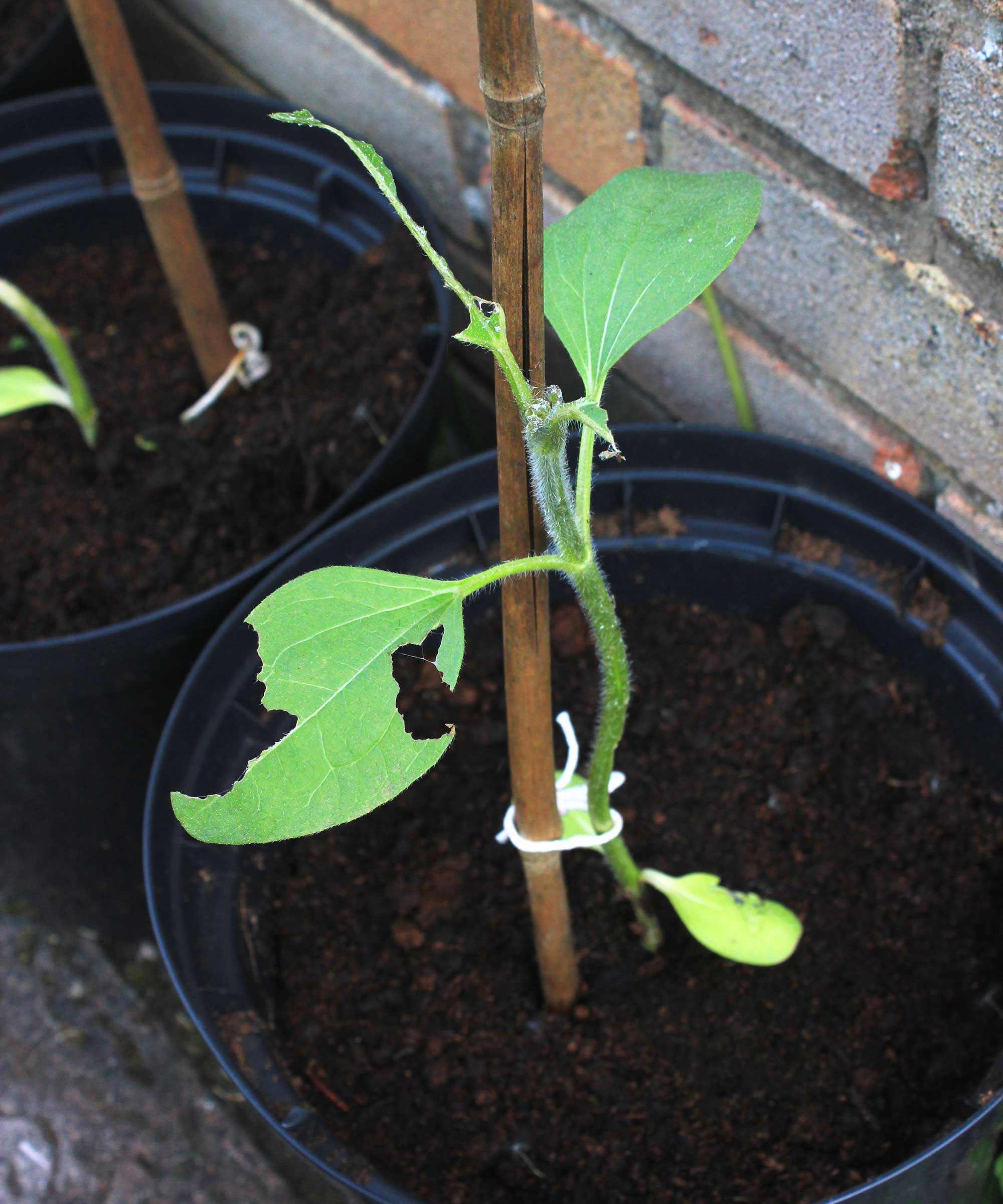
What can you do with sunflowers after they've finished flowering?
Sunflowers are perfect if you're looking for wildlife garden ideas, as you can leave the faded flowerheads on the stalks to dry so that the birds can feast on the seeds. To make it even easier for the birds, you can cut the seedheads off and lay them out to dry, or try hanging them from a branch. Once the seeds have all gone, pop the plant in your compost bin.
Alternatively, you can dry the flowerheads and seeds for your own use in the kitchen.
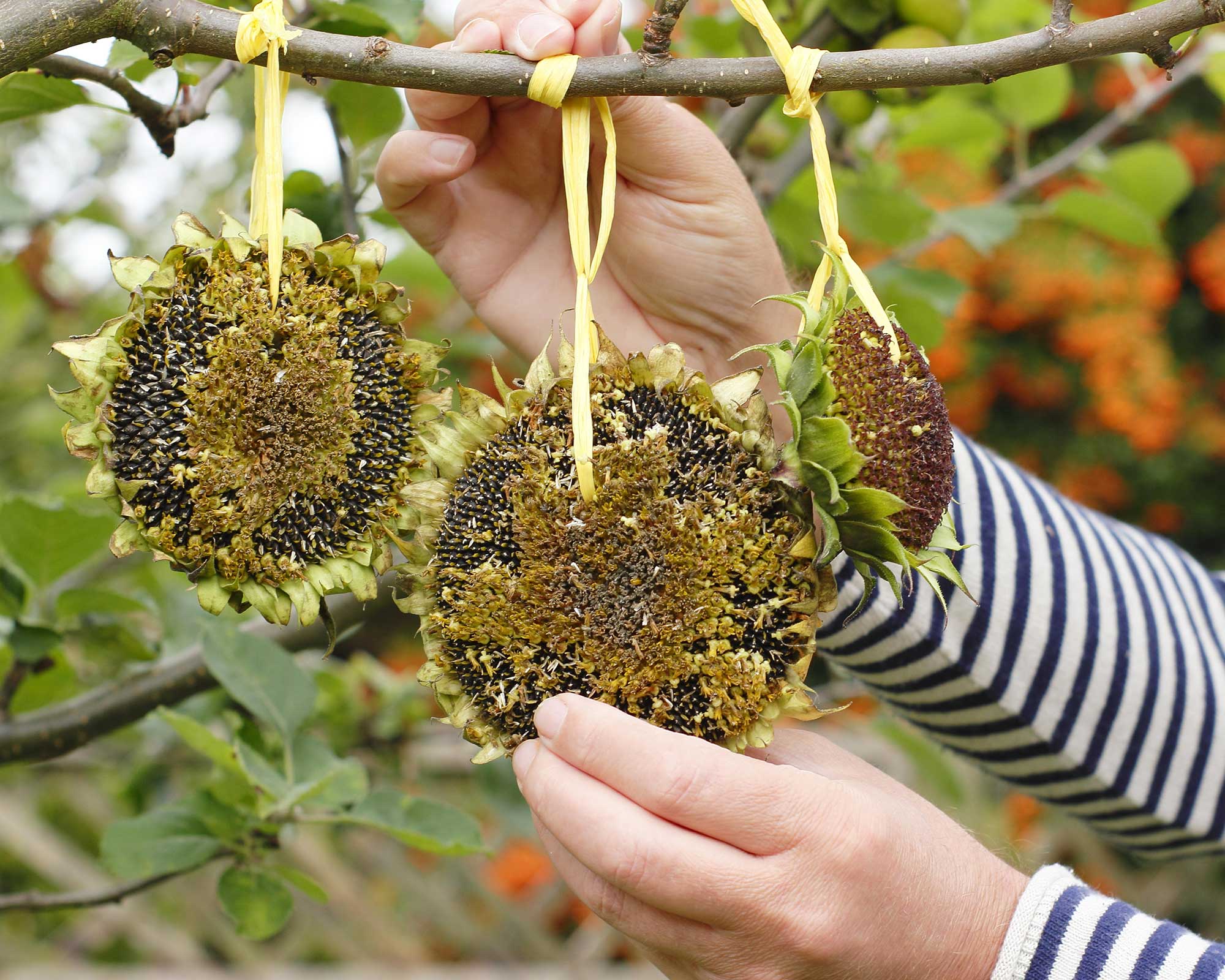
Where to buy sunflowers
Keen to get your hands on some seeds now that you've learned how to grow sunflowers? Our quicklinks below will take you straight to leading suppliers.
Where to buy sunflower seeds in the UK
- Shop sunflowers at Amazon
- Shop sunflowers at B&Q
- Shop sunflowers at Crocus
- Shop sunflowers at Dobies
- Shop sunflowers at Suttons
- Shop sunflowers at Thompson & Morgan
- Shop sunflowers at You Garden
Where to buy sunflower seeds in the US
- Shop sunflowers at Amazon
- Shop sunflowers at Home Depot
- Shop sunflowers at Walmart
- Shop sunflowers at Burpee
Varieties of sunflower: 8 types to try
There are so many different types of sunflower to choose from, both in terms of color and how tall they grow. We've listed some of our favorites below.
1. 'Lemon Queen'
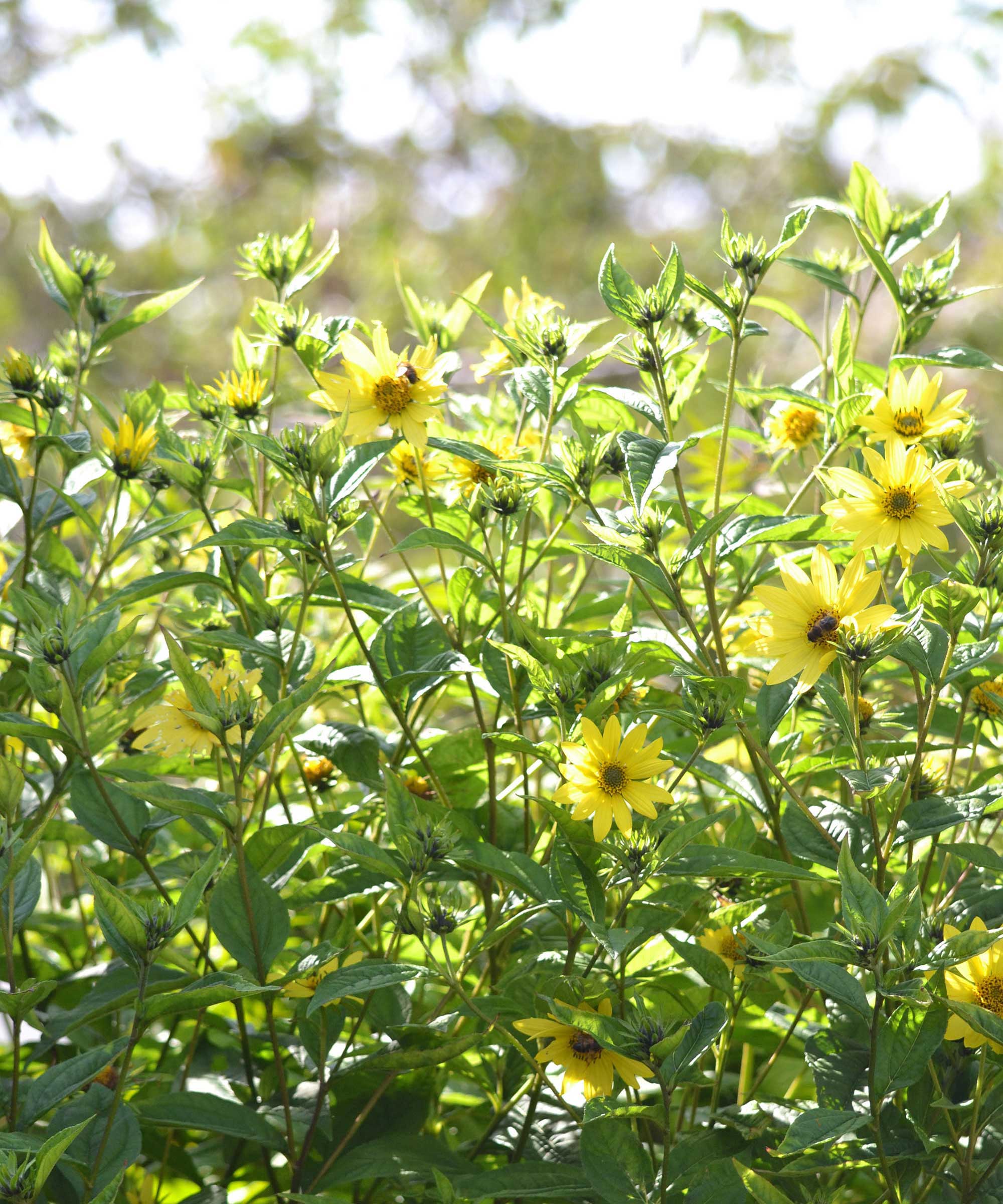
'Lemon Queen' has masses of lemon-yellow, daisy-like flowers that span up to 6in in diameter. The plants grow to around 6.6ft (2m) in height, so this variety is ideal for providing a splash of color towards the back of a sunny border.
Whilst the majority of sunflowers are annuals, this type of sunflower happens to be a perennial. Give it plenty of space and watch out for it becoming too invasive over time.
2. 'Ruby Sunset'
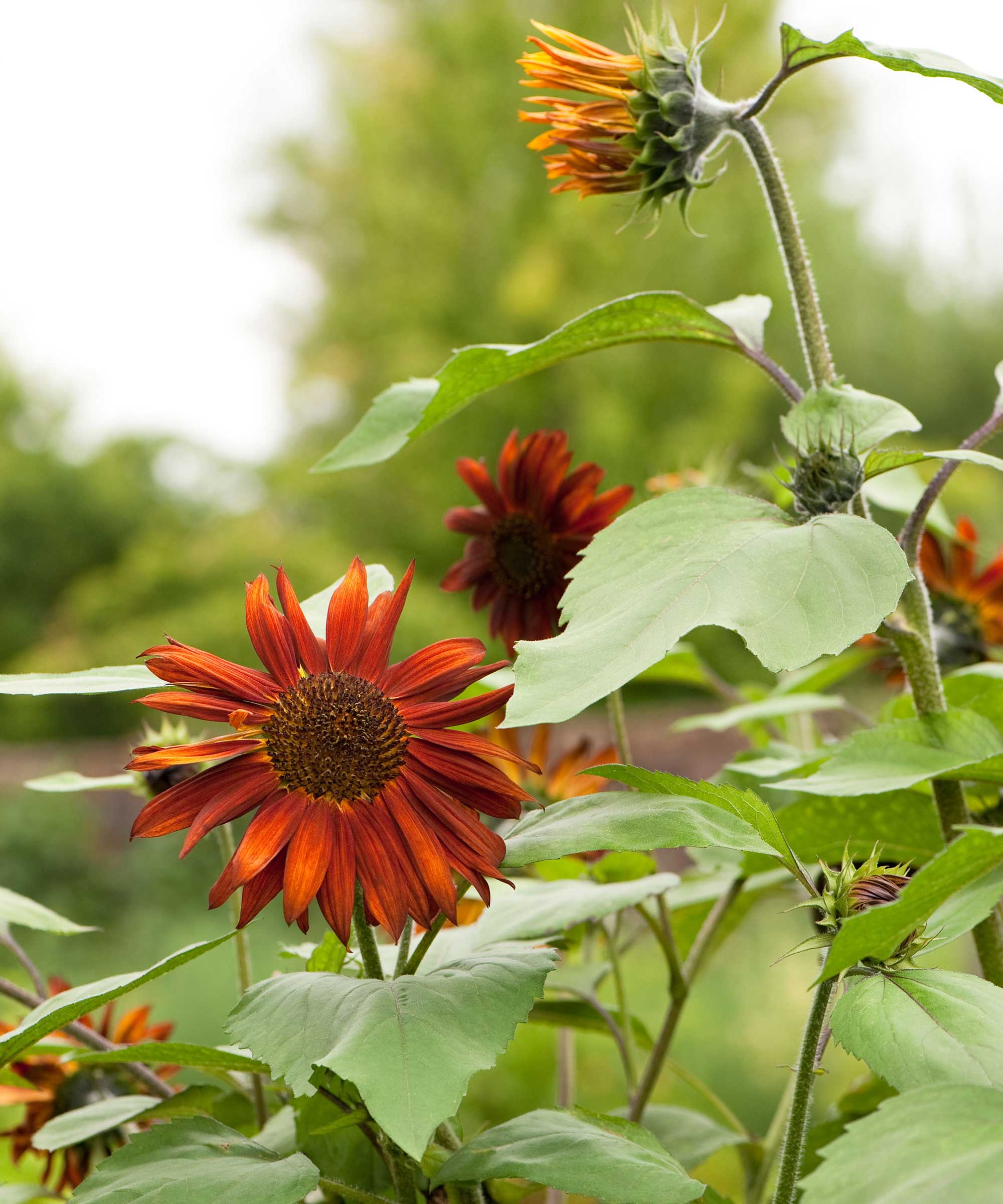
This stunning, wine-colored variety produces 5–15 medium-sized blooms per stem which are perfect for picking to arrange in the house. In the border, plants will grow to 3.3–4.9ft (1–1.5m).
Their bold appearance makes them a good choice if you're on the lookout for modern garden ideas.
3. 'Velvet Queen'
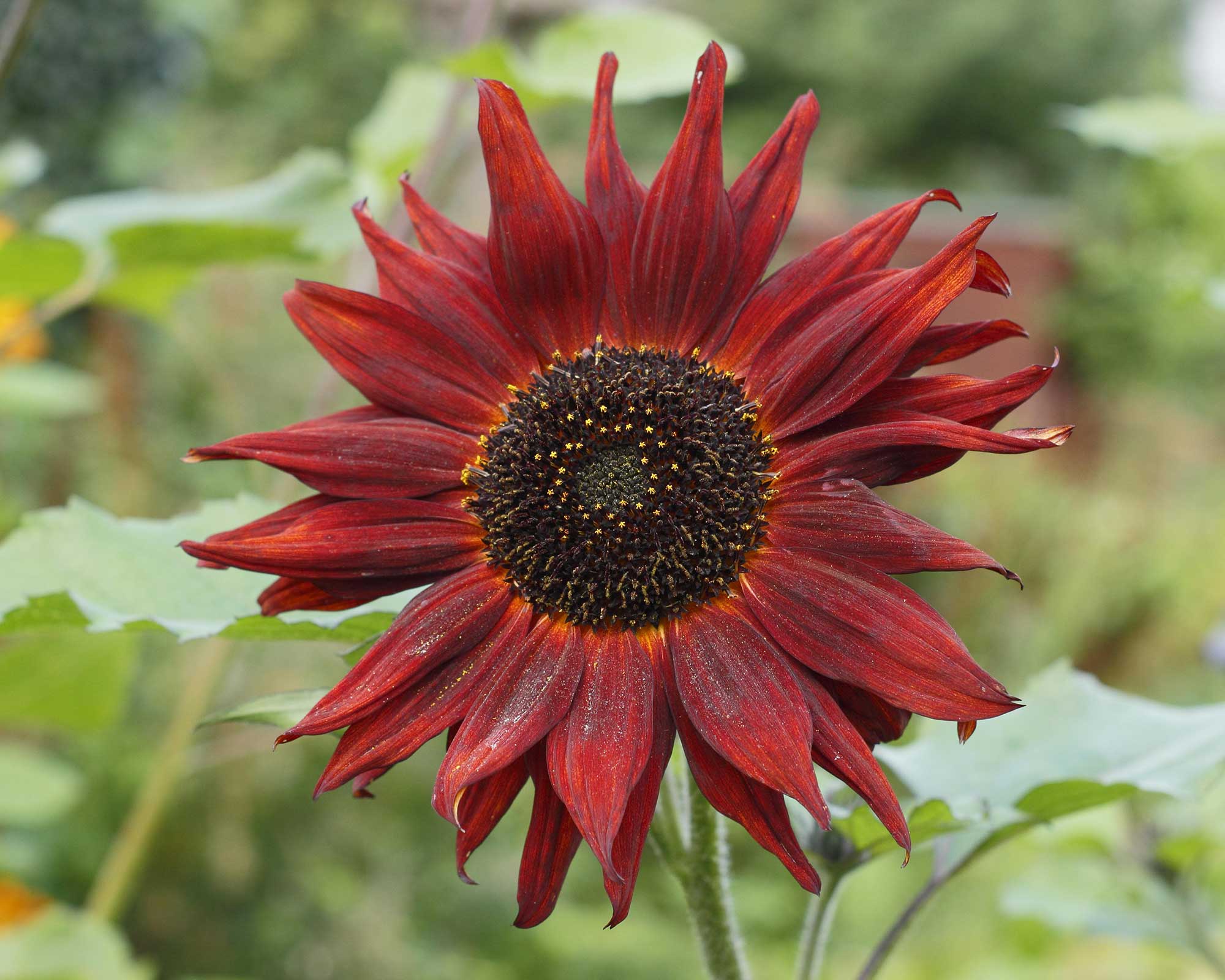
Just as opulent in appearance as it sounds, this medium-sized sunflower sports petals in a deep, coppery bronze or rich red around a dark chocolate-hued center. It grows to around 4.9ft (1.5m) in height and spreads to about 19.7in (50cm). A dramatic addition to any backyard.
4. 'Ms Mars'
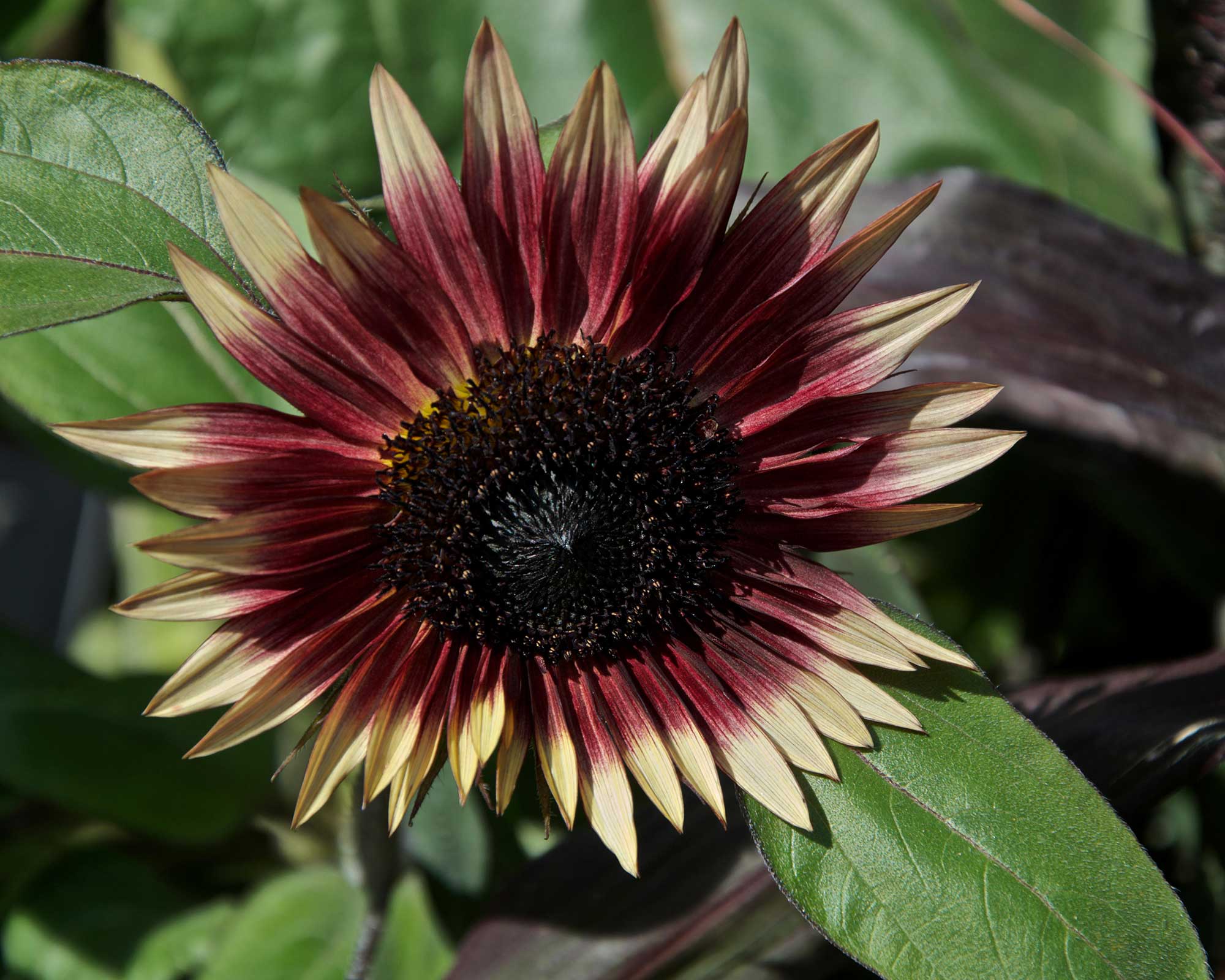
This dwarf sunflower, with its dark foliage and unusual red petals with white tips, makes a stunning addition to the garden. It works well at the front of a border as it only grows to a height of 1.6– 2ft (50–60cm).
Alternatively, this is a great variety to grow in a pot if you're looking for vibrant container gardening ideas.
5. 'Vanilla Ice'
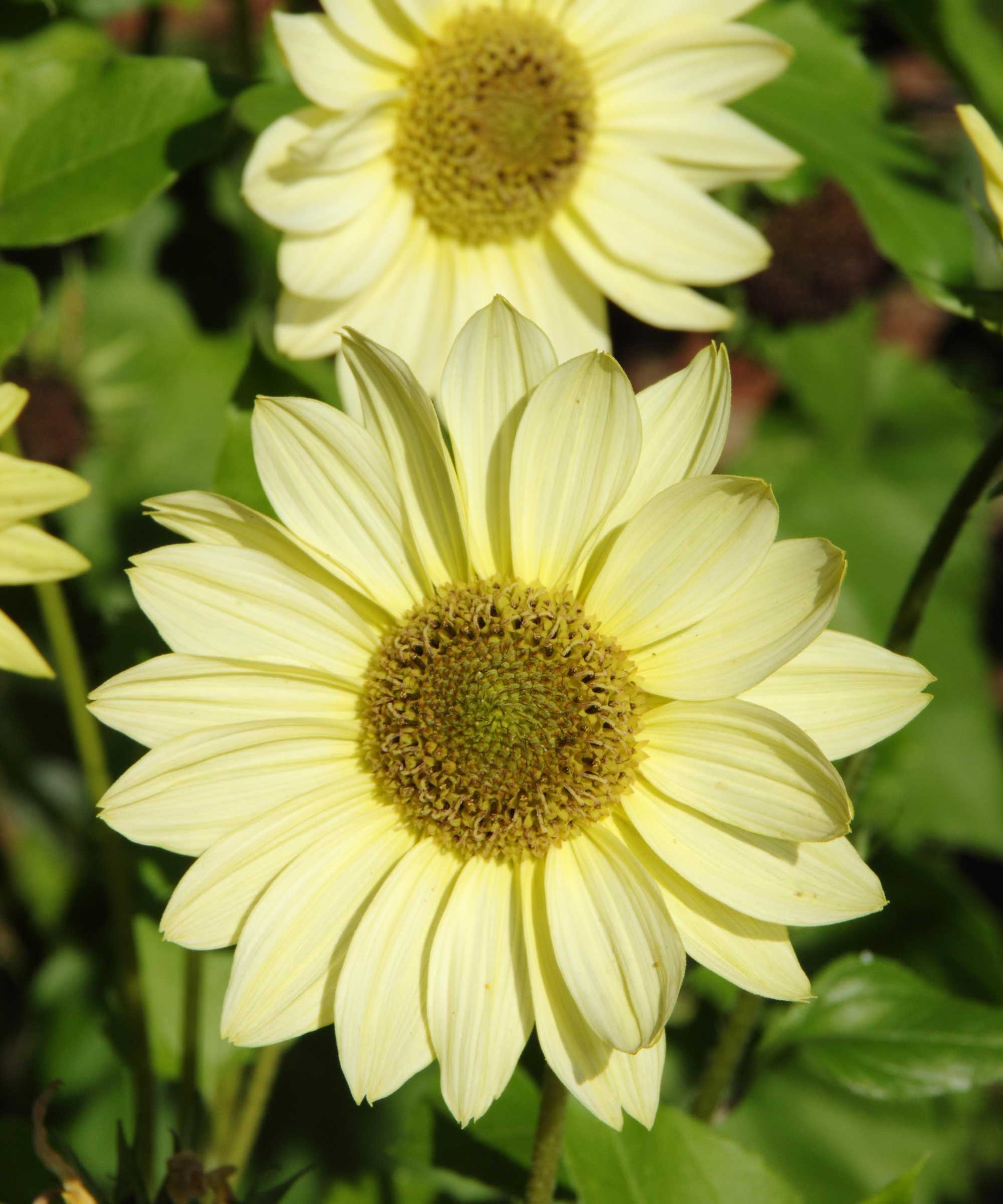
'Vanilla Ice' is a bushy variety offering very pale yellow flowers from summer into fall. Its small and slender flowerheads are perfect for bringing indoors to create beautiful vase arrangements. The plants will grow to heights of around 3.9ft (1.2m).
If you want to grow more of the best cutting garden flowers, then our guide has some gorgeous suggestions.
6. 'Titan'
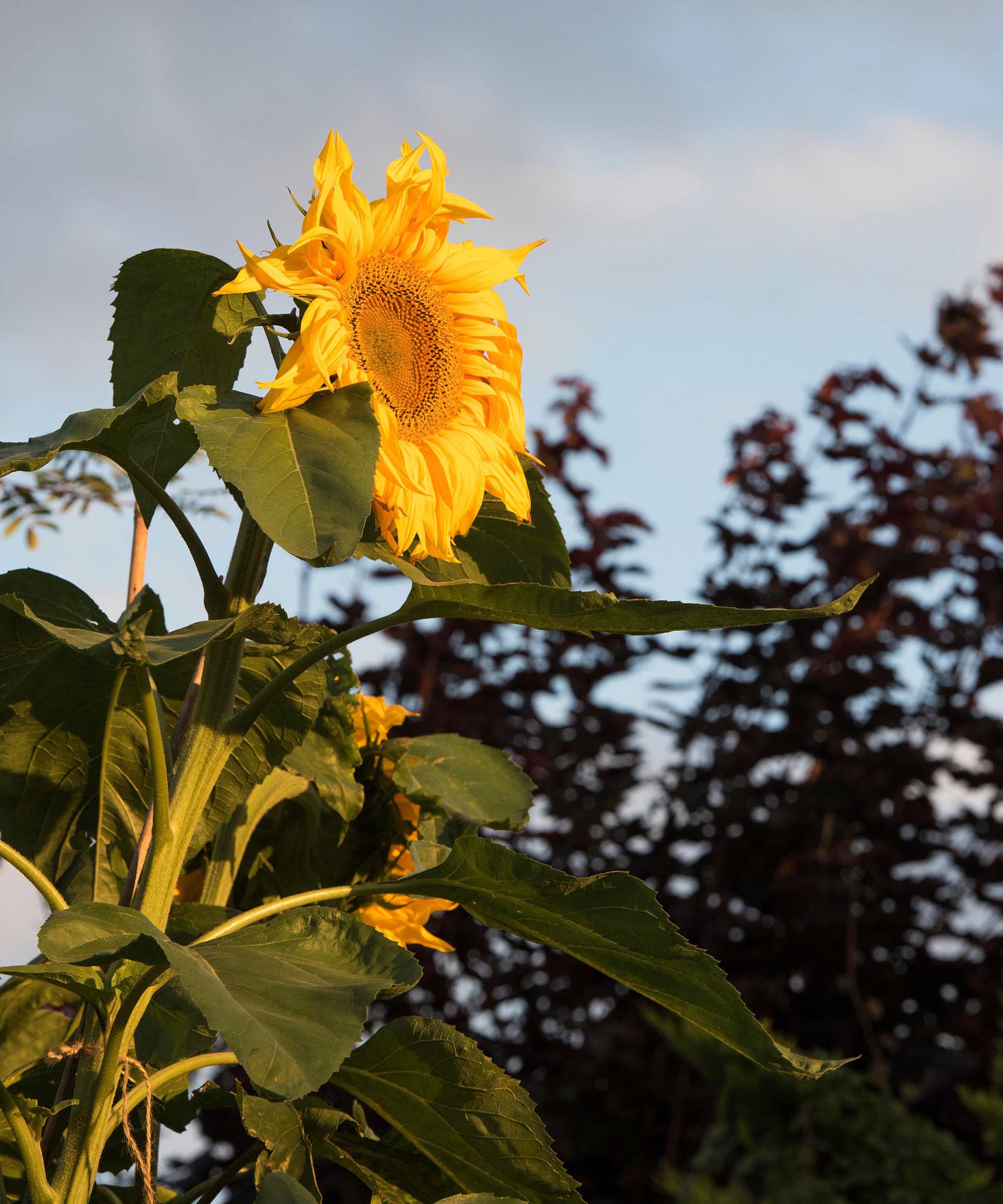
'Titan' is, as its name suggests, a giant of a sunflower that can reach up to 9.8ft (3m) tall. Its flowers are enormous too – spanning 19.7in (50cm) across.
As well as looking impressive, they're a great source of nectar for pollinators. Plus, they'll provide tons of seeds for visiting birds when the temperatures drop. This makes them an ideal choice if you're wondering how to attract birds into your garden.
7. 'Joker'
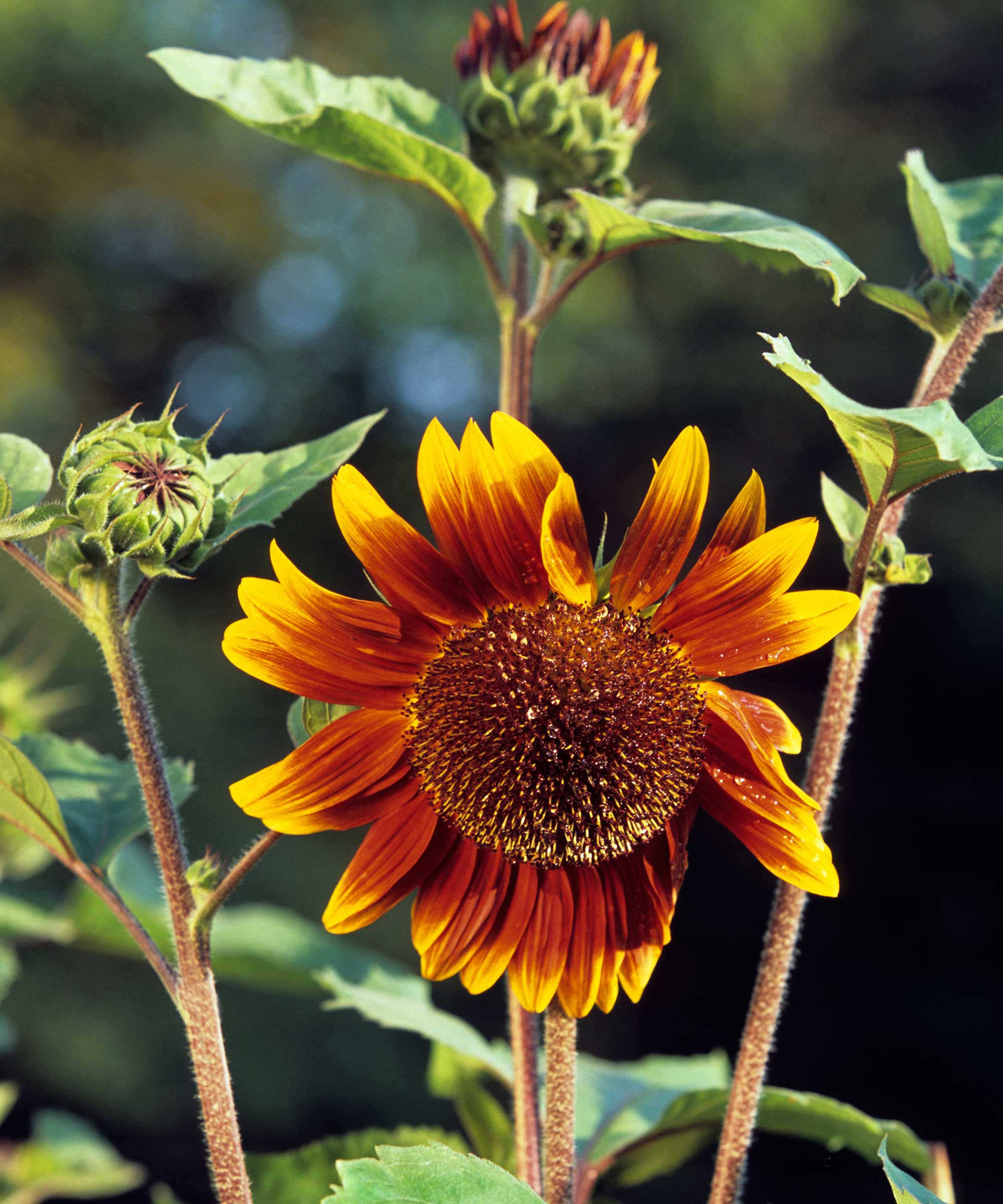
This multi-stemmed sunflower has a dramatic appearance, due to its ring of two-toned orange and yellow petals. What's more, the flowerheads are pollen-free, so they make an excellent choice for cutting.
The plants will grow to around 4.9ft (1.5m) tall.
8. 'Teddy Bear'
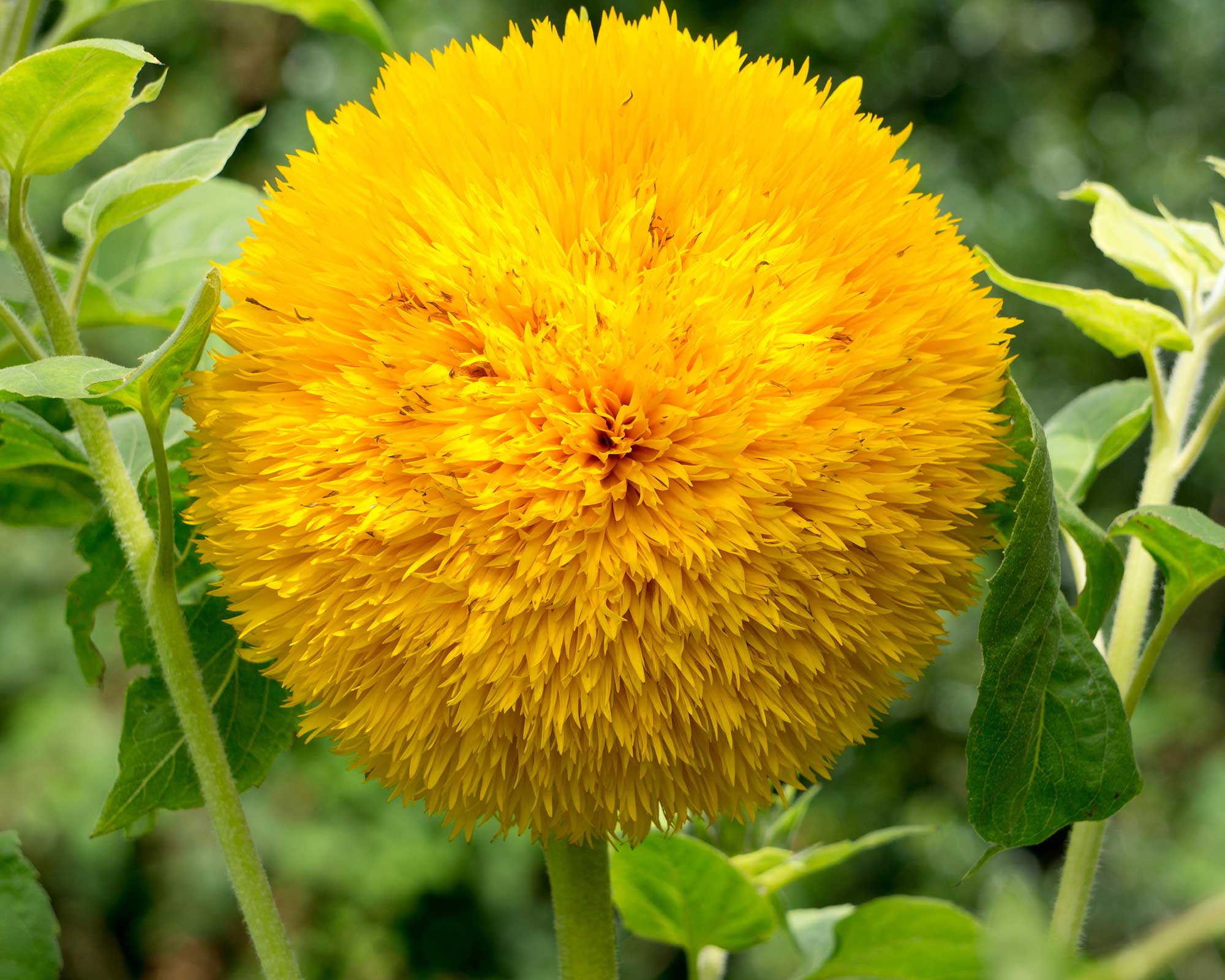
If you fancy something a little different for your flowerbeds or borders, then how about opting for this cheerful variety? With its big, fluffy, double-bloom flowerheads in a golden yellow, it makes an eye-catching addition to the garden and will delight any onlooker.
As it only grows to a height of around 3.3ft (1m), it's a good pick for containers as part of your patio ideas. It also has a good vase life when cut.
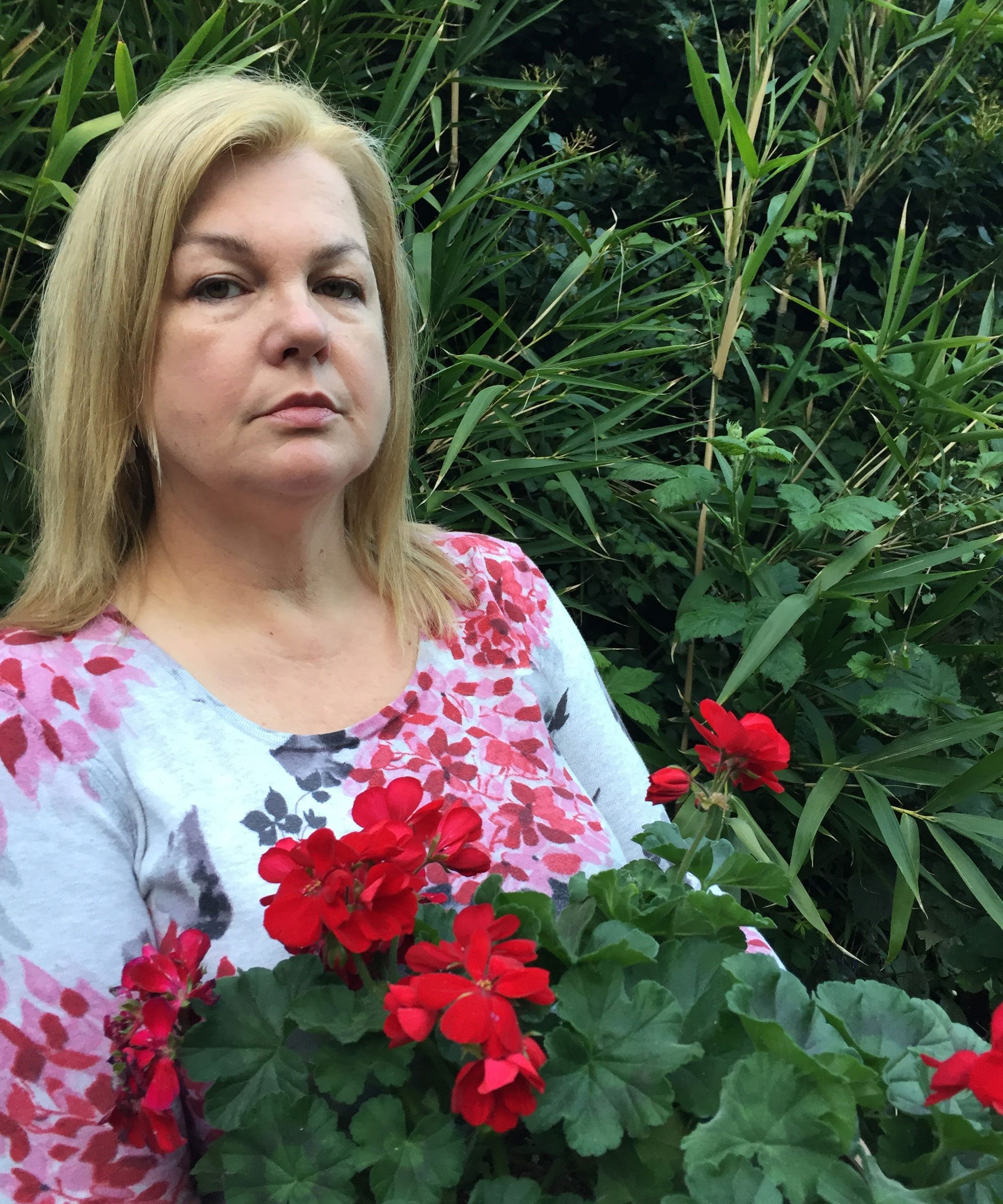
Lifestyle journalist Sarah Wilson has been writing about gardens since 2015. She's written for Gardeningetc.com, Livingetc, Homes & Gardens, Easy Gardens and Modern Gardens magazines. Having studied introductory garden and landscape design, she is currently putting the skills learned to good use in her own space where the dream is establishing a cutting garden.
